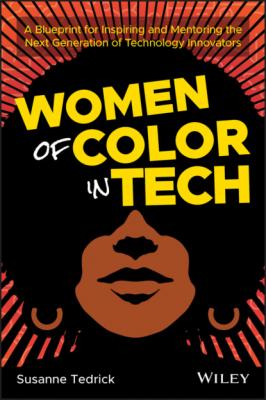ТОП просматриваемых книг сайта:
Women of Color in Tech. Susanne Tedrick
Читать онлайн.Название Women of Color in Tech
Год выпуска 0
isbn 9781119633495
Автор произведения Susanne Tedrick
Жанр Зарубежная деловая литература
Издательство John Wiley & Sons Limited
A willingness to work beyond “normal” hours: Our society has become conditioned to expect products and services to be available and working 24/7. While technology has automated many functions and reduced the need for humans, humans still need to be available should things not be working properly or if disaster strikes.It isn't uncommon for software engineers at top tech companies and critical industries (e.g., financial services, insurance, retail, etc.) to work 60- to 90-hour workweeks. Some tech jobs may not be as demanding and subscribe to a regular 40-hour workweek, but there may be times where your day will end well beyond “quitting time.”
Creating a Blueprint
We've pointed out that the level of participation of women of color in tech is underreported when there's a larger discussion of the lack of women in tech overall. The reason why this is important to point out is because of a concept called intersectionality. Intersectionality describes that while people may be of the same gender, how they experience the world is influenced by their race, ethnicity, age, sexual orientation, and other factors.
The experiences of women of color at home, in their schools, and in their workplaces are different—sometimes significantly—than those of their white peers. They are likelier to face more negative social interactions than those of their white peers and have lower self-esteem. They are less likely to have access to certain educational or professional opportunities as well.
With that in mind, the standard career advice in popular books, blogs, and social media platforms does not address the unique challenges and needs of this community. For example, many people loved Sheryl Sandberg's Lean In when it was released in 2013. Many felt that Sandberg had adequately addressed the roadblocks women were having in gaining leadership positions in their organizations, and offered good, practical advice on how they can move their careers forward.
The central problem with the book, which Sandberg herself later acknowledged, is that it assumed that the reader had certain privileges that many women of color do not have: completely supportive households that don't require much of their time and attention, work cultures that allow expression of their thoughts without fear of being fired or held back, and access to career mentors to help them become stronger leaders. This lack of understanding of where the reader may be coming from and experiencing caused much of Sandberg's advice to ring hollow for women of color.
The challenges women of color face in landing a tech job are unique and great in number. In this book, we will address many of these challenges, whether you are just starting out on your career journey or you are transitioning into a new career after years in another role or industry. We'll be covering subjects such as these:
Finding your tech path—What tech career would best serve your strengths and interests?
Building and growing a supportive network—Finding your “tribe.”
How to gain skills—How do you prepare to get these jobs?
Demonstrating your skill in resumes, interviews, and social media.
Coping with difficulties in your personal, academic, and work lives.
With that, let's get started on your journey into tech!
Summary
While seeing an uptick in the number of women of color in tech than previous years, many women of color are also leaving the field as well.
No one factor alone is contributing to the lack of women of color in tech and why they may be leaving; there’s a confluence of social, economic and cultural issues that are contributing to this persistent scarcity.
Despite these negative statistics, women of color are not just surviving, but thriving, in tech. Tech opportunities are plentiful, pay well and give you opportunities to be creative (and hopefully have fun in the process).
There are many pathways to get into tech; and there are many diverse tech fields one can get into. There's no one “right” way to get in to tech.
Конец ознакомительного фрагмента.
Текст предоставлен ООО «ЛитРес».
Прочитайте эту книгу целиком, купив полную легальную версию на ЛитРес.
Безопасно оплатить книгу можно банковской картой Visa, MasterCard, Maestro, со счета мобильного телефона, с платежного терминала, в салоне МТС или Связной, через PayPal, WebMoney, Яндекс.Деньги, QIWI Кошелек, бонусными картами или другим удобным Вам способом.

